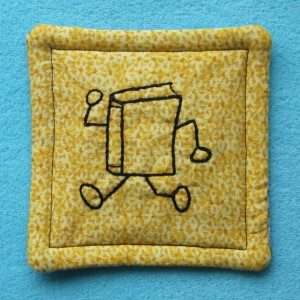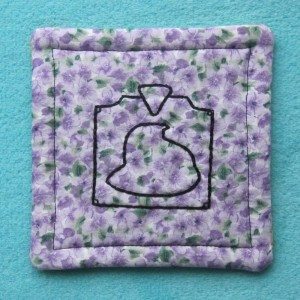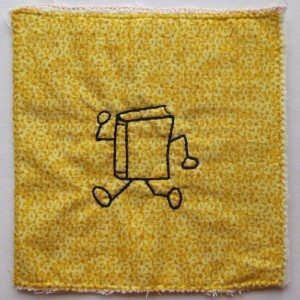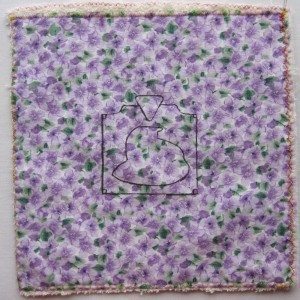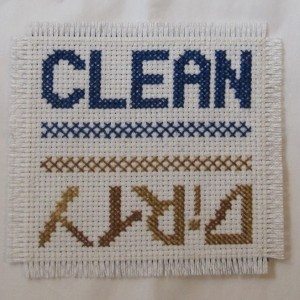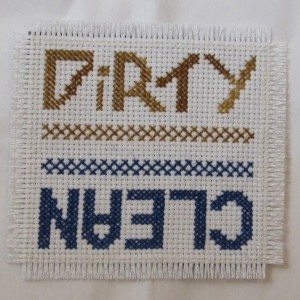I used to go to a coffee shop at least three times a week, and until I procured a good reusable mug, I tried to conserve resources by reusing the cardboard sleeves they provide for insulation on the paper cups. I would keep one in my purse (clearly this was at a coffee shop that didn’t pre-wrap the cups in sleeves). This pattern dates from that era, when I thought as long as I was keeping a cup sleeve on my person, it might as well be one that protected my hands better than a thin scrap of cardboard.
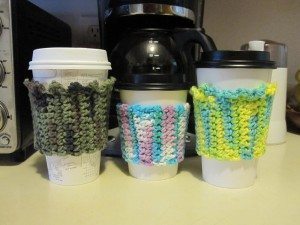
This pattern is highly dependent on gauge, or at least the row height part of gauge. With worsted-weight cotton yarn and a G hook (4.25mm), I stitch 6 rows in 1.75 inches. It could be a little tighter or looser, but if your gauge is very different from mine your sleeve will not fit well on the cup.
The basic idea is to make a tall rectangle of mostly single crochet, with the occasional row that gets taller as it goes across, to shape for the flare of the cup sides. My sleeve is 9 stitches across, and the shaping rows go sc 3, hdc 3, dc 3. They are all even rows, so they won’t cancel each other out.
Chain 10. All rows will have 9 stitches.
1-3. Sc across; ch 1, turn (3 rows).
4. Sc 3, hdc 3, dc 3; ch 1, turn.
5-11. Sc across; ch 1, turn (7 rows).
12. Sc 3, hdc 3, dc 3; ch 1, turn.
13-17. Sc across; ch 1, turn (5 rows).
18. Sc 3, hdc 3, dc 3; ch 1, turn.
19-25. Sc across; ch 1, turn (7 rows).
26. Sc 3, hdc 3, dc 3; ch 1, turn.
27-29. Sc across; ch 1, turn (3 rows).
Align the top of row 29 with the starting chain. Sl st across to join. Ch 1; FO or proceed around the top of the cozy to make a decorative edging.
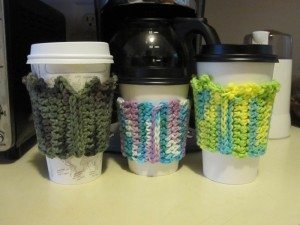
The white/blue/purple cozy is undecorated. The green “camouflage” cozy has a modified picot edging: [sc, ch 3, sl st] in same st, separated by 2 sl st apiece except the first and last, which are a bit further apart. It makes me think of Oscar the Grouch wearing a crown. The green/yellow/blue cozy has ch-3 alternating with sl st all around, one sl st every other row of sc, two in the top of each dc, one in the bottom of each dc, and two when I got back to the seam.
